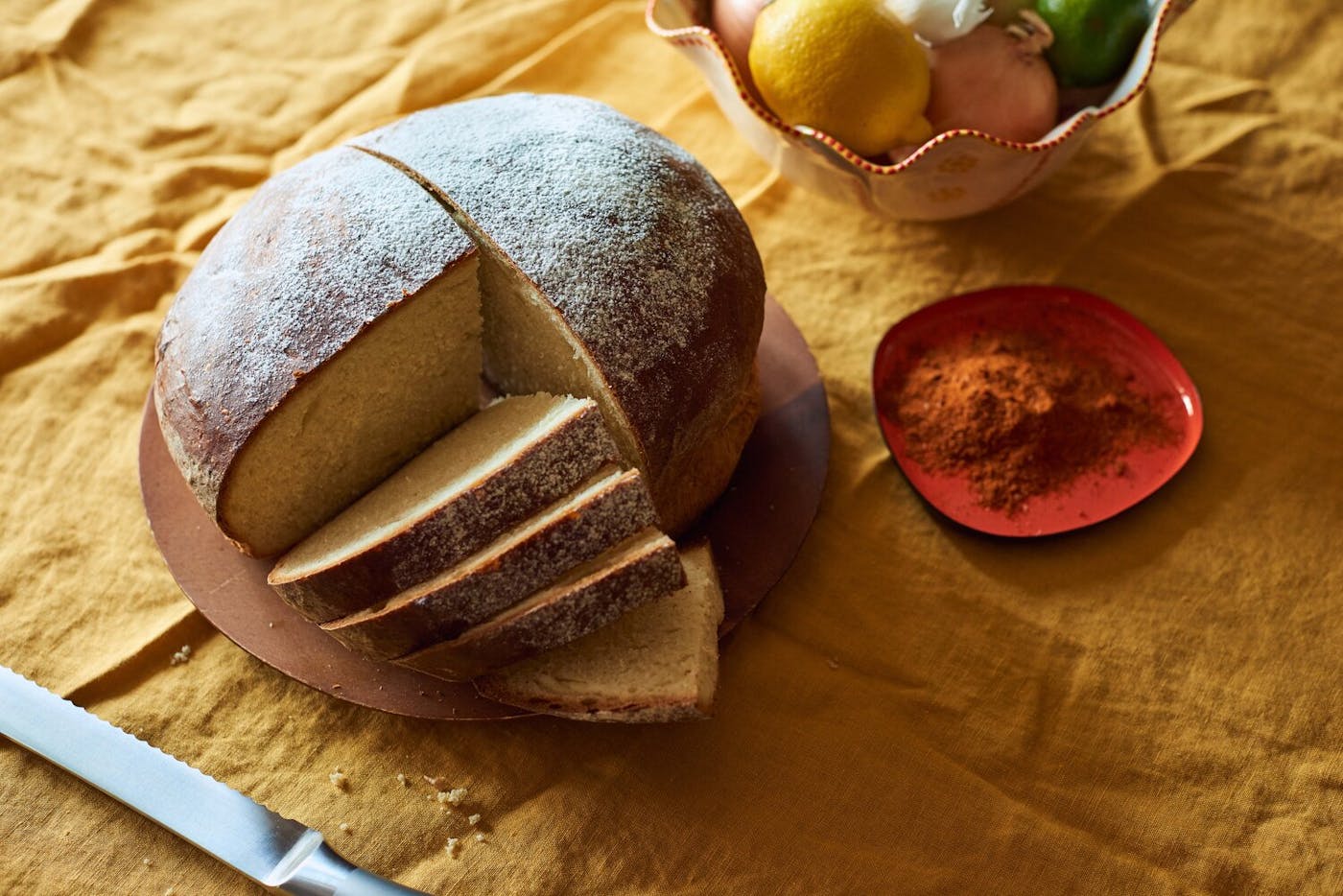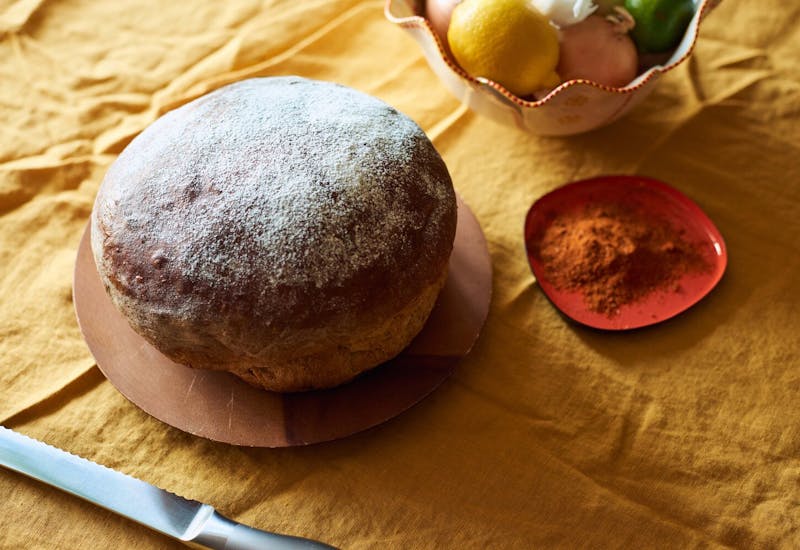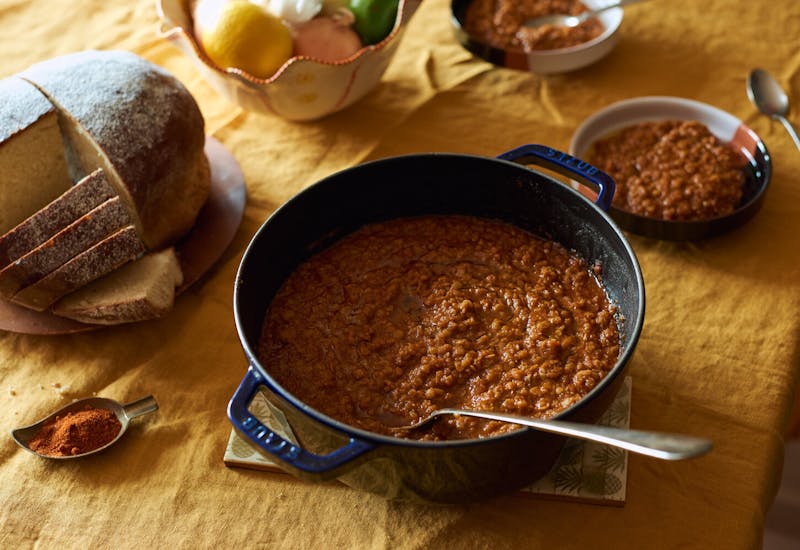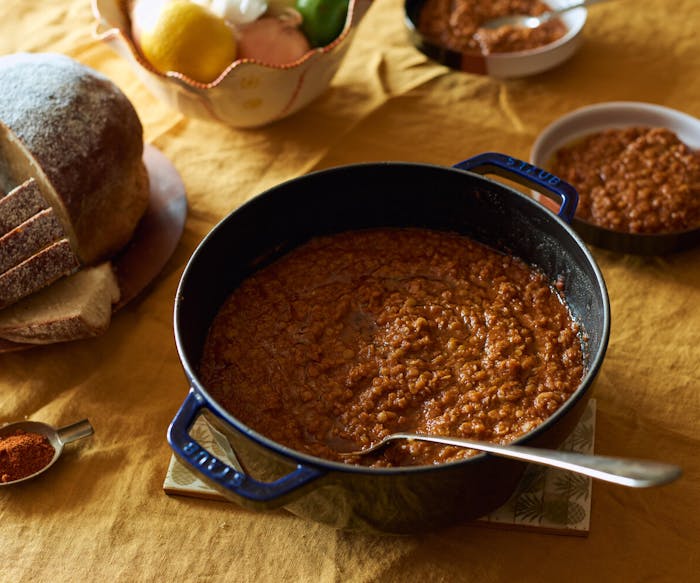“The dabo has been traveling with us throughout all our journey, our life, and it’s still here in New York,” Beejhy Barhany, the chef and owner of Tsion Cafe in Harlem, says. She’s speaking of a simply-prepared bread, traditionally served in the Ethiopian Jewish community for Shabbat and celebrations. “It has a delicious smell,” Beejhy adds, one that connects her to the Tigray Region of northern Ethiopia where she lived until she was five years old.
Her aunts, mom, and grandmother would start sifting the flour on Thursdays, making sure they had enough to bake not only for their family, but for those in need in their community. On Fridays evenings, a kess, or Jewish religious leader, would ring a bell to announce the arrival of the Sabbath and families would head to the synagogue with their dabos in tow.
After the service, the kess would bless the loaves and cut off a portion to remain in the synagogue for those in need. “Ethiopian food [and] culture is all about sharing and eating together,” Beejhy explains. “That’s the culture and the mentality that I come from.” The remainder of the dabo was taken home for dinner and served alongside doro wat, a traditional chicken stew, collard greens, other vegetables and sometimes messer wot, a red lentil stew laden with berbere, a spice mix made with cardamom, cloves, chile, cumin, nutmeg, cinnamon, and more.
In 1980, driven largely by Zionism, Beejhy, her family, and many members of their community started a long journey by land to Sudan. At the time, leaving Ethiopia was forbidden, so they moved largely in secret, walking and traveling by horse throughout the night and camping during the day, stopping at other Jewish villages so officials wouldn’t notice the migration. “We continued from one village to the next. This is how we managed to eventually arrive in Sudan,” she says.
The three month journey was treacherous. At times there was little or no water and the community had to dig to find a water source. They also encountered robbers once or twice. “People almost died,” on the journey, Beejhy says. Still, the community found time for devotion. “In the midst of all of that, they still...observed the Shabbat and blessed on the dabo — nonetheless in the middle of nowhere in the desert.”
When they finally reached Sudan, though, they were stuck. “Israel didn’t want to be involved in bringing Black Jews to Israel,” she explains. She waited with her family for three years to enter Israel and through that time, there was still dabo for Shabbat. The custom continued in Israel as Beejhy’s family settled into their new country, first living in an absorption center in Pardes Hanna, between Haifa and Tel Aviv. Despite the extraordinary challenges of moving and descrimination they faced in Israel, Beejhy says her parents felt the journey was worthwhile to be in the land of their forefathers.
As a teenager, Beejhy wanted to work that land and immerse herself in a community of Jews from the greater diaspora who had returned to Israel. She moved to a Kibbutz Alumim, near Gaza, with teens from places like England, Tunisia, Morocco. Together, they grew carrots and jojoba plants and milked cows. And, on a day when all the kids were asked to share their culture, Beejhy baked dabo.
The long journey of Beejhy’s dabo finally concluded in New York where she moved shortly after her Israeli army service. “I fell in love with New York, the diversity, the melting pot of different ethnic groups,” she says. It’s here that she and friends started the Beta Israel of North America Cultural Foundation. “When I first came to the U.S., [there was little] knowledge of Ethiopian Jews…. When you go to a synagogue, they will think that you are the nanny or the caretaker, you couldn’t be a Jew who was Black in synagogue,” Beejhy explains. Her restaurant Tsion Cafe and the foundation are aimed at celebrating the diversity and promoting inclusion within the Jewish world.
“I wanted to create a place where everybody is welcome if they want to experience Ethiopian food, but not only that, cause I’m not only Ethiopian; I have multiple identities. I’m Ethiopian, I’m Israeli, now I’m a New Yorker, so I wanted to incorporate all of those beautiful things and celebrate them in one venue in Harlem,” she says. And when there are Shabbat meals at the restaurant or holidays in Beejhy’s home, there’s always dabo.





